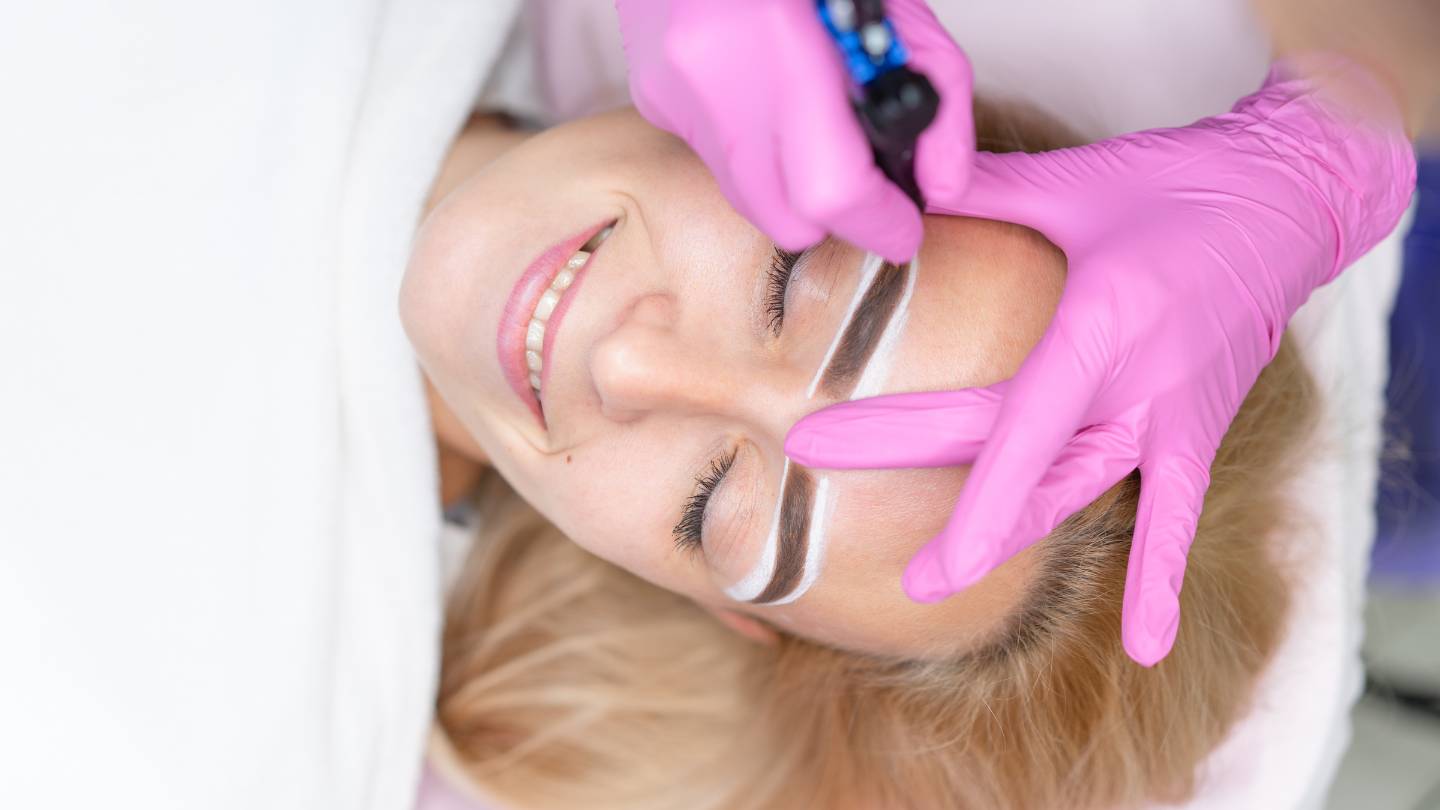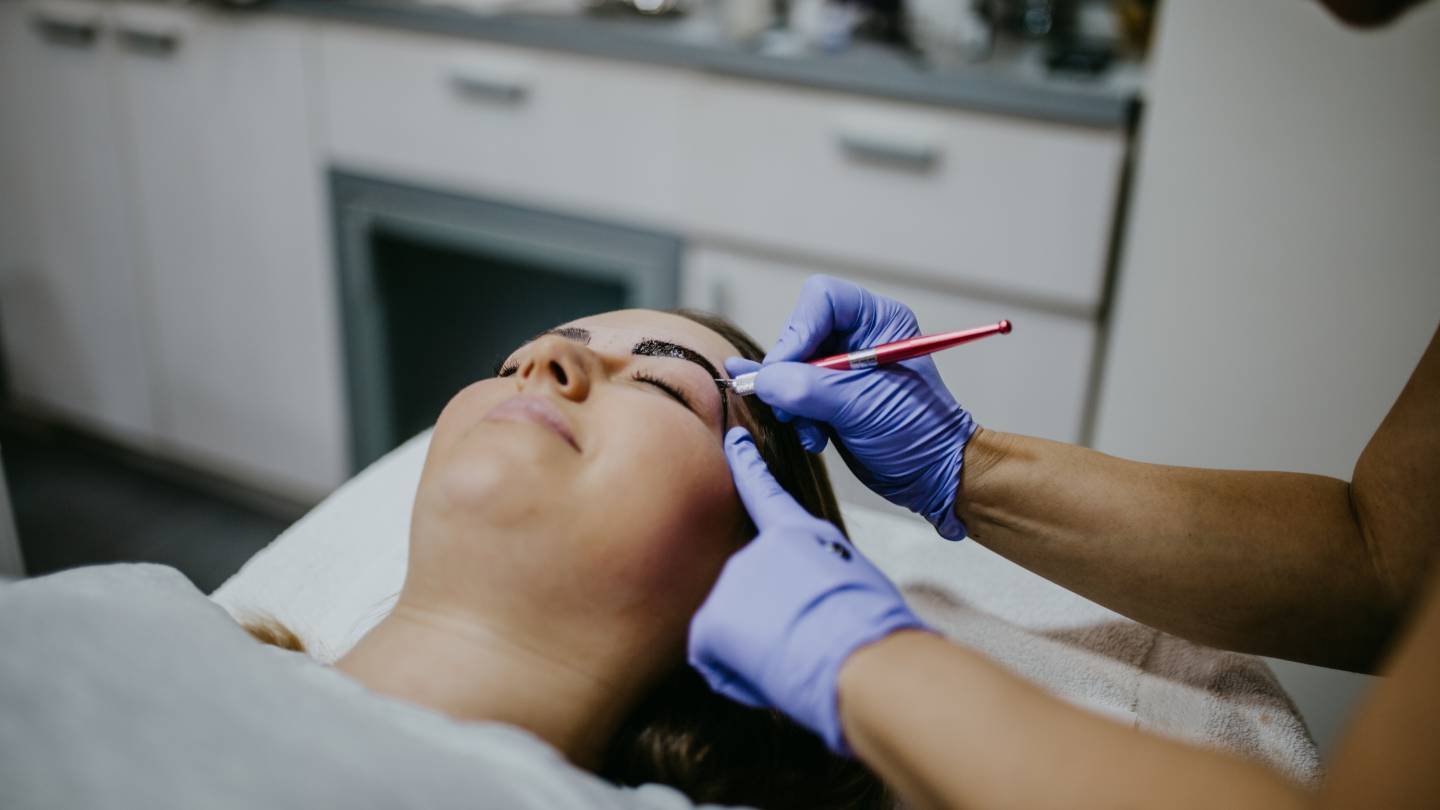Microblading is a popular semi-permanent cosmetic procedure that improves eyebrow appearance by producing natural-looking, fuller brows. While it has become a beauty trend for those seeking well-defined eyebrows, it’s essential to understand the long-term effects before committing to the procedure.
Microblading involves tiny incisions in the skin, where pigment is implanted to mimic hair strokes. While the immediate results can be stunning, the long-term outcomes vary and depend on factors such as skin type, aftercare, and the artist’s skill.
One of the most common long-term effects of microblading is fading or discolouration of the pigment over time. Unlike tattoos, the pigment used in microblading is designed to fade, typically lasting between one to three years.
However, as the pigment breaks down, it may change colour, sometimes developing a reddish, bluish, or greyish tint. Another potential concern is scarring or uneven healing if the procedure is not performed correctly or if proper aftercare is not followed.
Repeated microblading sessions can eventually damage the skin, making it difficult to achieve the same crisp, hair-like strokes in future touch-ups. Understanding these long-term considerations is important for anyone thinking about microblading to ensure they make an informed decision.
Let’s get straight to the point.
Microblading is a popular semi-permanent cosmetic procedure for achieving fuller, natural-looking eyebrows, but it’s essential to understand the long-term effects before committing. While the procedure offers immediate benefits like time-saving, natural appearance, and minimal maintenance, it has potential downsides.
Over time, the pigment fades and can change colour, requiring regular touch-ups. Repeated sessions can lead to scarring or changes in skin texture, and factors like sun exposure or skincare routines can accelerate fading. Before committing, consider these risks alongside the benefits to make an informed decision.
Long-Term Effects Of Microblading
Microblading is a semi-permanent cosmetic procedure that promises perfectly shaped eyebrows without daily maintenance. While the short-term benefits are appealing, it’s important to understand the long-term effects before deciding on the procedure. Here’s a detailed look at the potential long-term effects of microblading:
1. Durability And Fading
- Fading Over Time: One of the key long-term effects of microblading is the gradual fading of the pigment. Microbladed brows typically last between one and three years, depending on skin type, sun exposure, and the types of skincare products used. For instance, oily skin can cause the pigment to fade faster than dry skin.
- Touch-Ups: Annual or bi-annual touch-ups are often required to maintain the desired appearance of microbladed brows. Without regular touch-ups, the pigment fades to a lighter shade, and over time, the defined look of the brows may diminish.
2. Risk Of Infection
- Post-Procedure Vulnerability: Microblading involves making small cuts in the skin to implant the pigment, leaving the area vulnerable to infection. In the long term, repeated microblading can increase the chances of infection if the procedure is not performed in a sterile environment.
- Preventive Measures: To reduce this risk, choosing a qualified and experienced practitioner is important. Aftercare, including avoiding unnecessary touching, keeping the area clean, and following the practitioner’s instructions, is vital in preventing infections and promoting proper healing.
3. Potential Allergic Reactions
- Allergic Sensitivities: Some individuals may experience allergic reactions to the pigments used in microblading. While this is relatively rare, it can lead to discomfort, swelling, or irritation in the long term.
- Patch Testing: A patch test is often performed before the procedure to check for potential allergic reactions. This test is important to ensure that the pigments used won’t trigger any adverse effects in the future.
4. Changes In Skin Texture
- Scarring and Skin Texture Changes: Repeated microblading over the years can affect the skin’s texture. Each session involves making tiny cuts in the skin, and over time, these repeated cuts can lead to scarring, changes in the skin’s texture, or even skin irregularities.
- Risk of Scar Tissue: With frequent touch-ups, scar tissue can form over time, especially if the skin is not given enough time to heal properly between sessions.
5. Colour Changes Over Time
- Colour Shifting: One of the less discussed long-term effects of microblading is the potential for the pigment to change colour over time. Factors such as UV exposure from sunlight can cause the pigment to shift to unnatural shades like blue or orange.
- Sun Protection: To minimise colour changes, it is recommended to wear sunscreen on the brows and reduce sun exposure. Proper care can help maintain the pigment’s original colour longer, although fading is inevitable.
Long-Term Maintenance Of Microbladed Eyebrows
Maintaining your microbladed eyebrows involves periodic touch-ups to keep the colour and shape looking fresh. Typically, you’ll need a touch-up once a year, though individuals with oily skin may require more frequent maintenance.
Scarring From Multiple Sessions
Undergoing repeated microblading sessions can lead to scarring or changes in the texture of your skin. Discussing your long-term goals with your technician and understanding the potential for scarring after several procedures is important.
Reversal Challenges
While microblading is considered semi-permanent, reversing or significantly altering the results before they fade naturally can be challenging. Removal procedures, such as laser treatments, are available but can be costly and time-consuming.
Colour Changes And Fading
As the pigment fades, the colour of your eyebrows may shift. This is particularly true if you’re frequently exposed to the sun or use skin care products containing retinol, which can cause the pigment to break down more quickly.
Immediate Benefits Of Microblading
Microblading offers various immediate benefits, making it an attractive choice for many individuals. Some of these advantages include:
Time-Saving
Microblading significantly reduces the time you spend each day on your makeup routine. Instead of drawing in your eyebrows every morning, your microbladed brows are already in place, allowing you to streamline your beauty routine.
Cost-Effective Over Time
Although microblading can have a high initial cost, it proves cost-effective in the long run. The amount you spend on eyebrow pencils, gels, and other products can increase over time, making microblading a more economical solution.
Waterproof And Smudge-Proof
One of the most appealing aspects of microblading is its waterproof and smudge-proof nature. Whether exercising, swimming, or in humid conditions, your brows remain flawless, making this procedure ideal for individuals with active lifestyles.
Natural Appearance
Microblading is known for its natural results. The fine strokes created during the procedure resemble real eyebrow hairs, ensuring your brows look realistic and well-blended with natural facial features.
Confidence Boost
The immediate results of microblading can be transformative. For those with thin or uneven brows, the procedure provides a noticeable improvement that can enhance appearance and self-esteem.
Minimal Maintenance
Once your brows are microbladed, they require minimal maintenance. After the initial healing period, there’s no need for daily touch-ups, making this an attractive option for individuals with busy schedules.
Health And Safety Considerations Of Microblading
Making sure your skin is healthy and protected and that your overall well-being is during and after microblading is crucial. Here are some key factors to consider:
Choosing A Qualified Technician
Selecting an experienced and certified technician ensures a successful microblading experience. Look for technicians with solid portfolios, proper credentials, and positive client reviews. A professional consultation is also an excellent opportunity to ask questions and set expectations.
Pain And Discomfort
Microblading involves incisions in the skin, so some discomfort is expected. However, a numbing cream is applied before the procedure to reduce pain, making it tolerable for most individuals.
Healing Process
The healing process following microblading requires careful attention to ensure optimal results. After the procedure, your brows may appear darker than expected, and the area might be red or swollen. This is a normal part of recovery. It’s critical to adhere to the aftercare guidelines supplied by your technician, which may include avoiding water and sunlight and picking at scabs.
Conclusion
Microblading is a highly effective solution for those seeking fuller, more defined eyebrows with minimal daily maintenance. However, the immediate benefits must be weighed against the potential long-term effects, including fading, scarring, and changes in pigment colour.
Microblading offers significant benefits, such as time savings and a natural appearance. Still, before committing, it’s essential to understand the potential long-term effects, including fading, maintenance, and changes in skin texture.
Frequently Asked Questions
What Is Microblading, And How Does It Differ From Traditional Tattooing?
Microblading is a semi-permanent makeup technique for enhancing the appearance of eyebrows. Unlike traditional tattooing, which uses a machine, microblading involves manually depositing pigment into the upper layers of the skin with a fine blade.
This technique allows for a more natural-looking result, mimicking the appearance of eyebrow hairs. However, because it is less deep than traditional tattoos, microblading fades over time and requires touch-ups to maintain its appearance.
How Long Does Microblading Last, And What Factors Influence Its Longevity?
Typically, microblading can last between 1 and 3 years, depending on various factors such as skin type, lifestyle, sun exposure, and the quality of pigment used.
Oily skin types may find that their microblading fades faster due to the natural oil production that can cause the pigment to blur and fade more quickly. Regular touch-ups are recommended to maintain the desired look.
Are There Any Long-Term Side Effects Or Risks Associated With Microblading?
While microblading is generally considered safe, there are potential long-term effects and risks, including the possibility of scarring, allergic reactions to the pigment, infection if not properly cared for, and dissatisfaction with the appearance of the pigment fades unevenly or if the shape becomes outdated.
Choosing a reputable, experienced technician and following proper aftercare instructions can minimise these risks.
Can Microblading Cause Permanent Damage To Natural Eyebrows?
In rare cases, improper technique or deep incisions can damage hair follicles, potentially affecting the growth of natural eyebrows. However, when performed correctly by a skilled and licensed professional, microblading should not interfere with natural eyebrow hair growth.
Is It Possible To Reverse Or Remove Microblading, And How Does It Affect The Skin Over Time?
Yes, microblading can be removed or lightened through several methods, such as laser treatment, saline correction, or glycolic acid removal. However, these processes can be expensive and painful and require multiple sessions.
Repeated removal or correction procedures might affect the skin’s texture and appearance over time, potentially leading to scarring or discolouration.



